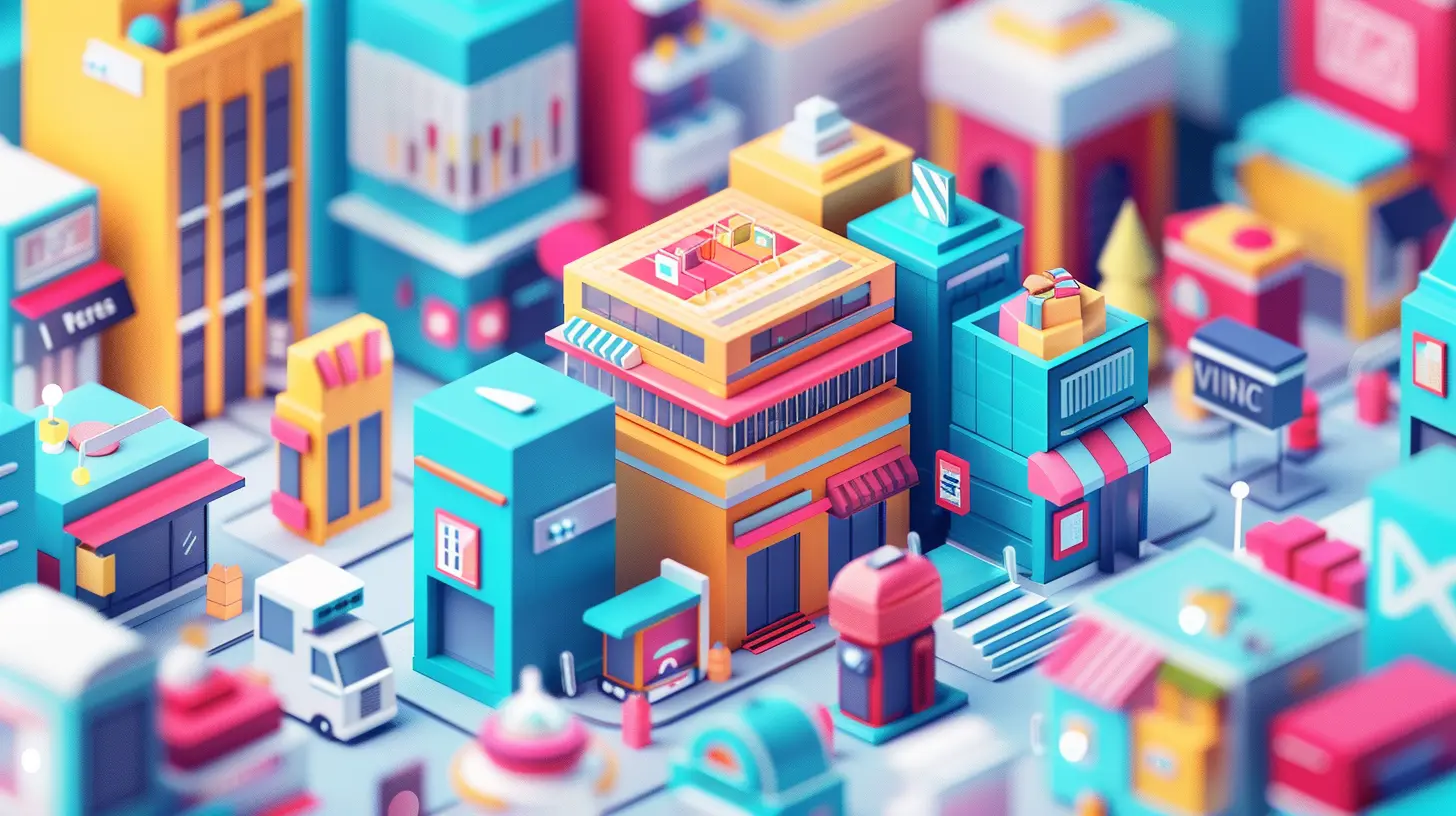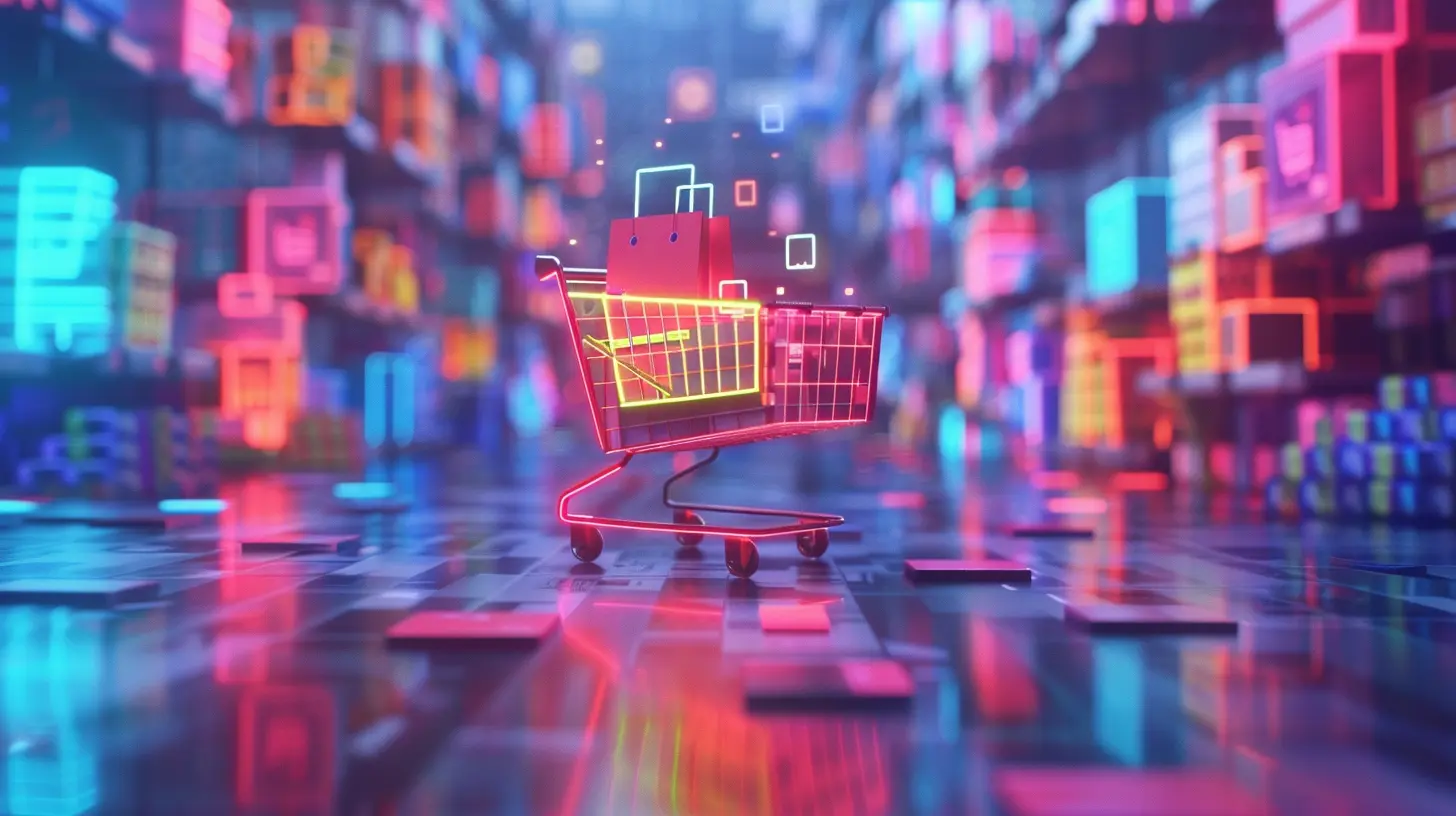The Growth of Direct-to-Consumer Brands in E-Commerce
19 November 2024
In recent years, the term "Direct-to-Consumer" (DTC) has been all the buzz in the e-commerce world. You’ve probably encountered it more times than you can count, but what does it really mean, and why is it so important? Well, simply put, DTC is when brands sell their products directly to customers without relying on third-party retailers or middlemen.
Think about it: no more browsing through a sea of options on Amazon or visiting a department store. Instead, you go straight to the brand's website, click a few buttons, and voilà! It’s as easy as pie. But what's more intriguing is how DTC brands have revolutionized the way we shop, and more importantly, how they’ve grown into a multi-billion dollar industry.
So, how did we get here? And what’s driving the meteoric rise of Direct-to-Consumer brands in e-commerce? Let’s dive into it.

The Rise of Direct-to-Consumer Brands
DTC brands didn’t just pop up overnight. Their growth is rooted in the advancement of technology and the accessibility of the internet. Think back to the early 2000s—a time when online shopping was still a novelty. Amazon was barely out of diapers, and eBay was the Wild West of online commerce. Fast forward to today, and the e-commerce landscape has transformed dramatically.With more consumers shopping online than ever before, brands soon realized they no longer needed to rely on traditional retail channels. They could sell directly to consumers, cutting out the middleman and reaping the benefits. And that's exactly what they did. Brands like Warby Parker, Casper, and Glossier are just a few examples of companies that have embraced the DTC model, and guess what? It worked!
Why DTC?
One of the big reasons DTC brands have flourished is control. When you sell directly to your customers, you control everything—pricing, branding, marketing, and most importantly, customer relationships. It's like owning the entire cake instead of just a slice.Middlemen, like retailers, often eat into a brand’s profits and dilute its messaging. By going direct, companies not only save costs but also create stronger, more personal connections with their customers. And in today’s world, where personalization is king, that’s a huge advantage.

The Role of Technology
Let’s face it: none of this would be possible without technology. From the invention of smartphones to the rise of social media platforms, technology has played a pivotal role in the boom of DTC brands.E-Commerce Platforms
First, let’s talk about e-commerce platforms like Shopify and BigCommerce. They've made it easier than ever for anyone to launch an online store. You don't need to be a tech genius or have a massive budget to get started. These platforms are user-friendly, affordable, and packed with features that let brands build and manage their own online stores with minimal hassle.In essence, they’ve democratized e-commerce. No longer do companies need to rely on expensive developers or complex infrastructures. Now, anyone with an idea and a little elbow grease can set up shop in a matter of days or even hours.
Social Media Advertising
Then, there’s the elephant in the room: social media. Instagram, Facebook, TikTok, and Pinterest have become the playgrounds for DTC brands. Why? Because these platforms allow brands to reach hyper-targeted audiences with laser precision.In the past, companies had to spend millions on TV commercials, billboards, and magazine ads. Now, they can run Facebook ads for $100 and reach thousands of potential customers. It’s not just cost-effective; it's also a game-changer in terms of engagement. Social media allows DTC brands to communicate directly with consumers, gather feedback, and build loyal communities.
Data & Analytics
Lastly—data. Data is the secret sauce behind the success of DTC brands. When brands sell directly to customers, they collect valuable data about their preferences, behavior, and purchasing habits.This data is gold because it allows DTC companies to tailor their marketing efforts, optimize their product offerings, and even predict future trends. It's like having a crystal ball that tells you exactly what your customers want before they even know it themselves.

Why Consumers Love DTC Brands
Okay, so we’ve talked about why brands love the DTC model, but what about consumers? Why do they keep flocking to these brands like bees to honey?Personalized Shopping Experience
One of the main reasons is the personalized experience. When you shop with a DTC brand, it doesn’t feel like you’re just another customer. You feel special. Brands like Stitch Fix use data and algorithms to send you clothes that match your style, while companies like Allbirds offer custom sizing and color options.It's like having a personal shopper, but without the snooty department store vibe. This kind of personalization makes consumers feel more connected to the brand, which in turn builds loyalty.
Better Prices
Another big draw is price. Because DTC brands cut out the middleman, they can offer products at a lower cost. Take Warby Parker, for example. Before they came along, buying a pair of stylish glasses could cost upwards of $500. Warby Parker flipped the script by selling glasses directly to consumers for a fraction of the price, without sacrificing quality.This price transparency is refreshing for consumers who are tired of paying inflated prices at traditional retailers. It’s like finding a loophole in the system that benefits you.
Community and Authenticity
Consumers today are also looking for more than just a product—they want a brand with a story, a mission, and values that align with their own. DTC brands excel at building authentic communities around their products.Take Glossier, for example. It started as a beauty blog before evolving into a full-blown cosmetics brand. Glossier didn’t just sell makeup; it created a community of beauty enthusiasts who felt like they were part of something bigger. This sense of belonging and authenticity resonates with consumers, especially millennials and Gen Z, who value transparency and inclusivity.

Challenges Faced by DTC Brands
Of course, it’s not all sunshine and rainbows. While the DTC model has plenty of advantages, it also comes with its own set of challenges.Customer Acquisition Costs
One of the biggest hurdles for DTC brands is the cost of acquiring new customers. Sure, social media advertising is cheaper than traditional methods, but it’s still not free. In fact, as more brands jump on the DTC bandwagon, the cost of digital advertising has skyrocketed.For example, Facebook ads used to be a goldmine for DTC brands, but as the platform has become crowded, the cost-per-click has increased significantly. This rise in customer acquisition costs (CAC) means that DTC brands need to get creative with their marketing strategies and focus on retaining existing customers rather than constantly chasing new ones.
Logistics and Fulfillment
Then there’s logistics. When you’re selling directly to consumers, you’re also responsible for fulfillment, shipping, and returns. That’s a lot of moving parts to manage.Many DTC brands outsource these tasks to third-party logistics (3PL) companies, but that comes at a cost. And if something goes wrong—like a delayed shipment or a damaged product—it’s the brand’s reputation that takes the hit.
Scaling and Saturation
Finally, there’s the issue of scaling. Sure, many DTC brands start off small and scrappy, but what happens when they want to grow? Scaling a DTC brand is no easy feat. It requires significant investment in everything from supply chain management to customer service.Not to mention, the DTC space is becoming increasingly saturated. With more brands entering the market every day, standing out from the crowd is becoming harder and harder. This saturation forces brands to constantly innovate and stay ahead of the competition—a task easier said than done.
The Future of DTC Brands
So, where do we go from here? Is the DTC boom just a passing trend, or is it here to stay?Hybrid Models
One trend we’re already seeing is the rise of hybrid models. Some DTC brands are starting to partner with traditional retailers to expand their reach. For example, Casper mattresses are now available at Target, and Glossier has opened physical stores in key cities. These hybrid models allow DTC brands to maintain the direct connection with their customers while also reaching new audiences through brick-and-mortar channels.Sustainability and Social Responsibility
Another key trend is the focus on sustainability and social responsibility. Today’s consumers are more eco-conscious and socially aware than ever before. As a result, DTC brands that prioritize sustainability, ethical sourcing, and social impact are likely to thrive in the future.The Role of AI
Lastly, we can’t ignore the role of artificial intelligence (AI) and machine learning in the future of DTC brands. From personalized recommendation engines to AI-powered chatbots, technology will continue to play a crucial role in enhancing the customer experience and optimizing business operations.
Conclusion
It’s safe to say that Direct-to-Consumer brands have fundamentally changed the e-commerce landscape. By cutting out the middleman, leveraging technology, and building strong relationships with customers, DTC brands have carved out a unique and profitable niche in the market.While challenges like customer acquisition costs and logistics remain, the future looks bright for DTC brands that can adapt to changing consumer preferences and continue to innovate. As technology continues to evolve, so too will the DTC model, making it an exciting space to watch in the coming years.
all images in this post were generated using AI tools
Category:
E CommerceAuthor:

Jerry Graham
Discussion
rate this article
17 comments
Michelle Henson
The rise of direct-to-consumer (DTC) brands has revolutionized the e-commerce landscape, enabling companies to connect directly with consumers, enhancing brand loyalty and customer experiences. This shift leverages data-driven marketing strategies and social media engagement, allowing brands to customize offerings and streamline operations, ultimately fostering a more personalized shopping experience.
February 6, 2025 at 9:41 PM

Jerry Graham
Thank you for your insightful comment! Indeed, DTC brands are reshaping e-commerce by prioritizing customer connection and personalization through data-driven approaches and social media.
Etta Ruiz
While DTC brands thrive, they must navigate rising competition and consumer fatigue to sustain long-term growth.
January 30, 2025 at 9:53 PM

Jerry Graham
Absolutely, striking a balance between innovation and customer engagement is crucial for DTC brands to maintain their momentum in a competitive landscape.
Xena McKittrick
Great insights on the rise of direct-to-consumer brands! This shift is transforming e-commerce and empowering consumers. Excited to see how these brands continue to innovate and connect!
January 23, 2025 at 8:11 PM

Jerry Graham
Thank you! I'm glad you found the insights valuable. The DTC model indeed represents a thrilling shift in e-commerce, and I can't wait to see what innovations come next!
Henrietta Conrad
In the digital marketplace's embrace, Direct-to-consumer brands find their place, Crafting dreams with every click, An e-commerce dance, both bold and slick.
January 16, 2025 at 5:19 AM

Jerry Graham
Thank you! You've beautifully captured the essence of the DTC revolution in e-commerce. It's a transformative dance that empowers brands and consumers alike!
Selkie Sheppard
Direct-to-consumer brands are reshaping e-commerce, enhancing customer experience and market competition.
January 8, 2025 at 5:57 AM

Jerry Graham
Absolutely! Direct-to-consumer brands are indeed revolutionizing e-commerce by prioritizing customer experience and driving healthy market competition.
Ramona McCallum
In the digital marketplace's embrace, Brands bloom directly, a vibrant trace. Connecting hearts, unfurling dreams, E-commerce thrives on these bright beams. With each click, a story is spun, In this realm, consumer and brand become one.
December 30, 2024 at 8:59 PM

Jerry Graham
Thank you! Your poetic summary beautifully captures the essence of direct-to-consumer growth in e-commerce, highlighting the deep connections between brands and consumers.
Cypher Wheeler
The rise of direct-to-consumer brands in e-commerce reflects shifting consumer preferences for personalization and convenience. This trend disrupts traditional retail, empowering brands to build stronger customer relationships and optimize margins.
December 23, 2024 at 9:47 PM

Jerry Graham
Absolutely! Direct-to-consumer brands are reshaping the retail landscape by prioritizing personalized experiences and convenience, which fosters deeper customer connections and enhances profitability.
Naya Kearns
Direct-to-consumer brands are reshaping e-commerce by enhancing customer experience and cutting out middlemen effectively. Great insights!
December 18, 2024 at 3:34 AM

Jerry Graham
Thank you! I'm glad you found the insights valuable. DTC brands truly are revolutionizing the shopping experience!
Liora McRae
The rise of direct-to-consumer brands is reshaping e-commerce, allowing companies to build stronger customer relationships and increase profit margins by eliminating intermediaries.
December 12, 2024 at 4:24 AM

Jerry Graham
Absolutely! Direct-to-consumer brands are revolutionizing e-commerce by fostering direct relationships with customers, which enhances loyalty and boosts profit margins by cutting out the middleman.
Rory McBride
The rise of direct-to-consumer brands is reshaping e-commerce, enabling personalized shopping experiences and fostering stronger customer relationships through innovative marketing strategies.
November 30, 2024 at 12:26 PM

Jerry Graham
Thank you for your insights! The shift towards direct-to-consumer brands indeed highlights the importance of personalization and strong customer connections in today's e-commerce landscape.
Runeveil Benton
The rise of direct-to-consumer brands reshapes e-commerce, prioritizing customer experience and brand loyalty. However, sustainability and market saturation pose significant challenges for long-term success.
November 29, 2024 at 5:23 AM

Jerry Graham
Thank you for your insightful comment! You're right—while direct-to-consumer brands excel in enhancing customer experience and loyalty, addressing sustainability and market saturation will be crucial for their future success.
Alexander McDonough
Great read! It’s exciting to see how direct-to-consumer brands are reshaping e-commerce. They’re making shopping more personal and fun! Here’s to innovation and connection—can’t wait to see what the future holds for consumers and creators alike!
November 26, 2024 at 7:32 PM

Jerry Graham
Thank you! I'm glad you enjoyed the read. Exciting times ahead for consumers and creators in the evolving e-commerce landscape!
Reina Lopez
The rise of direct-to-consumer brands is reshaping the e-commerce landscape. By cutting out middlemen, these brands enhance customer experience and build loyalty. As consumer preferences shift towards personalized shopping, this trend will likely continue to thrive, driving innovation and competition in the market.
November 24, 2024 at 1:42 PM

Jerry Graham
Absolutely! Direct-to-consumer brands are indeed revolutionizing e-commerce by prioritizing customer experience and personalization, paving the way for increased innovation and market competition.
Sabina McWhorter
This article beautifully captures the essence of DTC brands revolutionizing e-commerce. Their rise not only empowers consumers but also fosters meaningful connections between brands and their audiences. Thank you for sharing!
November 21, 2024 at 9:28 PM

Jerry Graham
Thank you for your thoughtful comment! I'm glad you found the article resonant with the transformative impact of DTC brands in e-commerce.
Soleil McGinn
The rise of direct-to-consumer brands highlights a shift in consumer behavior, emphasizing personalized experiences and increased brand loyalty through innovative e-commerce strategies.
November 20, 2024 at 12:04 PM

Jerry Graham
Absolutely! The rise of direct-to-consumer brands indeed reflects a significant change in consumer preferences, prioritizing personalized experiences and fostering stronger brand loyalty through innovative e-commerce approaches.
Gunner Jackson
Empowering consumers, reshaping retail dynamics effectively.
November 19, 2024 at 8:34 PM

Jerry Graham
Thank you! Empowering consumers is indeed a key factor in the rise of direct-to-consumer brands, as it shifts the balance of power and prioritizes customer experience.
Levi Williams
Who knew shopping could be so personal? With direct-to-consumer brands booming, it's like each online purchase comes with a virtual hug! Say goodbye to middlemen and hello to products that feel custom-made just for you. E-commerce just got a lot cozier!
November 19, 2024 at 12:15 PM

Jerry Graham
Absolutely! Direct-to-consumer brands are redefining shopping by creating a more intimate and personalized experience for consumers. It's a win-win!
MORE POSTS

The Role of Blockchain in Future Smart Home Security

Automating Your Garden: Smart Irrigation and Sensors

The Hidden Costs of Relying on Digital Assistants

How Virtual Reality is Changing the Way We Watch Sports

How AI is Revolutionizing Healthcare

The Role of IoT in Managing Water Resources Efficiently

The Most Anticipated VR Games That Will Change the Way You Play

How AI is Revolutionizing E-Commerce Platforms

The Top Safety Tips for Using Your VR Headset

The Growing Influence of Video Content in E-Commerce

How Transparent Solar Panels Are Redefining Eco-Friendly Architecture